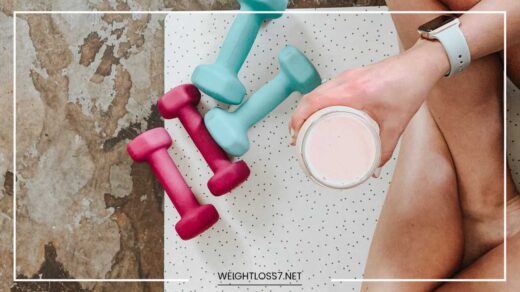How to Lose Weight in Your Face

Facial Fat Reduction
How to Lose Weight in Your Face: A Comprehensive Guide to a Slimmer, Healthier You
Many of us strive for a defined and sculpted jawline, sharper cheekbones, and a more youthful facial appearance.
While genetics play a role in facial fat distribution, achieving a slimmer face is possible through a combination of lifestyle changes, targeted exercises, and dietary adjustments.
This guide delves deep into understanding facial fat accumulation, explores various methods for reducing it, and emphasizes the importance of a healthy approach to weight management.
Understanding Facial Fat Accumulation
Before diving into strategies, let’s explore the factors influencing facial fat:
- Genetics: Our genes dictate how our bodies store fat, and some people naturally have more facial fat than others.
- Age: As we age, collagen production slows down, leading to looser skin and a fuller appearance in the face.
- Diet and Nutrition: Consuming excess calories, unhealthy fats, and processed foods can contribute to weight gain, including facial fat accumulation.
- Hydration: Dehydration can lead to facial puffiness, while staying adequately hydrated promotes a more sculpted appearance.
- Sleep and Stress: Poor sleep and high stress levels can disrupt hormones that regulate weight management, impacting facial fat as well.
Taking Charge: Lifestyle Changes for a Slimmer Face
1. Embrace a Balanced Diet:
- Focus on Whole Foods: Prioritize fruits, vegetables, whole grains, lean proteins, and healthy fats like avocados, nuts, and olive oil. These foods provide essential nutrients and keep you feeling fuller for longer, reducing calorie intake.
- Limit Processed Foods: Processed foods often contain high amounts of sodium, unhealthy fats, and added sugars, all of which can contribute to facial bloating and weight gain.
- Reduce Salt Intake: Excess salt can lead to water retention and puffiness. Limit processed and salty foods, and use herbs and spices to add flavor to your meals.
- Stay Hydrated: Aim to drink plenty of water throughout the day. Water flushes out toxins and reduces facial bloating, contributing to a more defined look.
- Moderate Sugar and Alcohol: High intake of sugary drinks and alcohol can lead to weight gain, including facial fat. Moderation is key!
Sample Meal Plan for Facial Fat Reduction:
- Breakfast: Greek yogurt with berries and chia seeds, whole-wheat toast with avocado and eggs
- Lunch: Grilled chicken salad with mixed greens, quinoa, and balsamic vinaigrette
- Dinner: Salmon with roasted vegetables and brown rice
- Snacks: Fruits, nuts, vegetable sticks with hummus
2. Prioritize Exercise and Physical Activity:
- Cardio for Overall Fat Loss: Engage in at least 150 minutes of moderate-intensity cardio or 75 minutes of vigorous-intensity cardio per week. Running, swimming, cycling, dancing – choose activities you enjoy and can stick with consistently.
- Strength Training for Muscle Building: Building muscle mass can boost metabolism and promote a more toned appearance. Include exercises that target major muscle groups at least twice a week.
- Targeted Facial Exercises: While not a replacement for overall weight loss, facial exercises can help tone and strengthen facial muscles, contributing to a more sculpted look.
Facial Exercise Examples (3 sets of 10-15 repetitions each):
- Cheek Puffs: Puff your cheeks with air and hold for a few seconds, then release and repeat.
- Jaw Clenches: Clench your jaw for a few seconds, then relax and repeat.
- Chin Lifts: Tilt your head back and look towards the ceiling. Pucker your lips and hold for a few seconds, then relax and repeat.
- Fish Face: Suck in your cheeks and form a fish face. Hold for a few seconds, then smile while keeping your cheeks sucked in. Repeat.
- Neck Rotations: Slowly rotate your neck clockwise and then counter-clockwise.
3. Prioritize Sleep and Stress Management:
- Aim for Quality Sleep: Getting 7-9 hours of quality sleep each night is crucial for regulating hormones that influence weight management.
- Manage Stress: Chronic stress can elevate cortisol levels, leading to weight gain and facial fat accumulation. Practice stress-reduction techniques like yoga, meditation, or spending time in nature.
4. Consider Facial Massage Techniques:
Facial massage may help reduce puffiness, promote blood circulation, and contribute to a more toned appearance. Here are some techniques to incorporate:
- Lymphatic Drainage Massage: Use gentle upward strokes to massage your face and neck, encouraging lymphatic flow and reducing fluid retention.
- Gua Sha: This traditional Chinese technique involves scraping the skin with a massage tool to stimulate blood circulation and reduce facial tension. Apply gentle pressure and use upward strokes.
5. Embrace Sun Protection:
Sun exposure damages collagen and elastin fibers, leading to the breakdown of the skin’s structure and a loss of facial definition.
Consistently using sunscreen with SPF 30 or higher and protective clothing like hats can help maintain skin integrity and contribute to a more youthful appearance.
Incorporating Resistance Training:
Building muscle mass, including the muscles in your face, can contribute to a more sculpted look. Consider these resistance training exercises:
- Dumbbell Curls: Hold light dumbbells in each hand and perform bicep curls, engaging the facial muscles while promoting overall strength and toning.
- Face Pulls: Use resistance bands to target facial muscles and improve facial definition. Anchor the band around a secure object and pull it towards your face with controlled movements.
- Jaw Release: Clench your jaw tightly for a few seconds, then release slowly and repeat. This exercise can help relieve tension in the jaw and improve facial muscle flexibility.
Foods and Beverages for a Slimmer Face:
Certain foods and beverages may contribute to a more sculpted facial appearance by promoting hydration, reducing inflammation, and supporting overall health. Consider incorporating these into your diet:
- Watermelon: This hydrating fruit is low in calories and can help reduce facial puffiness.
- Cucumber: Rich in water and with anti-inflammatory properties, cucumber can aid in reducing facial puffiness.
- Celery: A low-calorie vegetable that acts as a natural diuretic, celery can help reduce water retention in the face.
- Berries: Packed with antioxidants, berries are a delicious and healthy addition to your diet, supporting overall health while potentially aiding in facial fat reduction.
- Green Tea: Known for its metabolism-boosting properties, green tea can be a beneficial beverage for those seeking facial fat reduction.
Limitations and Considerations:
- Genetics Play a Role: While lifestyle changes can significantly impact facial fat, remember that genetics influence where and how our bodies store fat. Some individuals may see quicker results than others.
- Facial Exercises Have Limitations: Facial exercises can tone muscles but may not be as effective for significant fat loss as diet and exercise. Consistency is key, and don’t expect overnight results.
- Safety First: Consult a doctor before starting any new exercise program, especially if you have pre-existing health conditions.
Alternative Approaches (Consider Consulting a Professional):
- Cosmetic Procedures: In some cases, cosmetic procedures like liposuction or facial fillers may be explored as a last resort. However, these procedures can be expensive and carry risks. It’s crucial to discuss them with a qualified healthcare professional.
Maintaining a Positive Body Image:
Focusing on achieving a healthy weight and embracing a positive body image are crucial throughout your weight loss journey.
Every person’s body is unique, and what matters most is your overall health and well-being. Celebrate your progress, prioritize healthy habits that support your physical and mental health, and avoid comparing yourself to unrealistic beauty standards.
Losing weight in your face requires a holistic approach that combines healthy lifestyle changes with a balanced diet and regular exercise.
By incorporating the strategies outlined in this guide and embracing a positive body image, you can work towards a slimmer, healthier you. Remember, consistency is key, and long-term healthy habits lead to sustainable results.
Additional Tips:
- Track your progress: Take photos or measurements to monitor your progress and stay motivated.
- Find an accountability partner: Having someone to support you on your journey can be helpful.
- Celebrate non-scale victories: Focus on how you feel and the improvements in your overall health, not just the numbers on the scale.
- Be patient: Sustainable weight loss takes time and dedication. Don’t get discouraged by setbacks, and keep working towards your goals.
By following these comprehensive strategies and prioritizing your well-being, you can achieve a slimmer face and a healthier, more confident you.
Advanced Techniques and Considerations for Facial Fat Reduction
This section delves deeper into some advanced techniques and considerations for those seeking more targeted approaches to facial fat reduction.
It’s important to remember that these methods should complement, not replace, the core principles of healthy eating, exercise, and a balanced lifestyle.
1. Dietary Supplements:
Certain dietary supplements may offer some benefits for facial fat reduction, but consult your doctor before incorporating them into your routine. Here are a few with potential applications:
- Green Tea Extract: Green tea extract contains concentrated levels of epigallocatechin gallate (EGCG), a compound with potential metabolism-boosting properties. Studies suggest it may aid in weight loss, though more research is needed to confirm its effectiveness specifically for facial fat reduction.
- L-Carnitine: This amino acid plays a role in transporting fatty acids into cells for energy production. Some studies suggest L-Carnitine supplementation may enhance fat burning during exercise, but the evidence for facial fat reduction is limited.
- Caffeine: Caffeine has a mild thermogenic effect, meaning it can increase calorie burning. However, excessive caffeine intake can have adverse effects like anxiety and insomnia.
Important Note: Dietary supplements are not regulated by the FDA for safety and effectiveness in the same way as medications. Consult a doctor before using any supplements, especially if you have pre-existing health conditions or take medications.
2. Intermittent Fasting:
Intermittent fasting involves cycling between periods of eating and fasting. While not a guaranteed approach for facial fat reduction specifically, it can promote overall weight loss, which may indirectly affect facial fat.
Common Intermittent Fasting Methods:
- 16/8 Method: This involves fasting for 16 hours and restricting your eating window to 8 hours each day.
- 5:2 Diet: This method involves eating normally for 5 days and restricting calorie intake to 500-600 calories on 2 non-consecutive days.
Consult with your doctor before attempting any form of intermittent fasting, especially if you have any underlying health conditions.
3. Topical Treatments:
Some topical creams and gels claim to promote fat burning or reduce facial puffiness. However, the evidence for their effectiveness is often limited.
These products may cause skin irritation in some individuals. Consult a dermatologist before using any topical treatments for facial fat reduction.
4. Medical Procedures (Consult a Qualified Healthcare Professional):
In some cases, medical procedures may be explored as a last resort for facial fat reduction. It’s crucial to discuss these options with a qualified healthcare professional to understand the risks and benefits involved. Here are two examples:
- Kybella: This injectable treatment uses deoxycholic acid to destroy fat cells in the chin area. However, it’s not suitable for everyone and may cause side effects like swelling and bruising.
- Liposuction: This surgical procedure involves removing fat deposits through suction. While effective for some, liposuction is an invasive procedure with potential complications.
5. Importance of a Holistic Approach:
Remember, a long-term, sustainable approach to facial fat reduction is crucial. Combining healthy lifestyle changes with targeted strategies like those mentioned above can maximize your results.
Maintaining a balanced diet, getting regular exercise, prioritizing sleep and stress management, and staying hydrated are essential for overall health and contribute to a slimmer facial appearance.
Final Word:
While achieving a sculpted face requires dedication and consistency, the methods outlined in this comprehensive guide can empower you to make informed choices and develop a sustainable plan.
Remember, prioritize your overall well-being, celebrate your progress, and embrace a healthy relationship with your body.

















